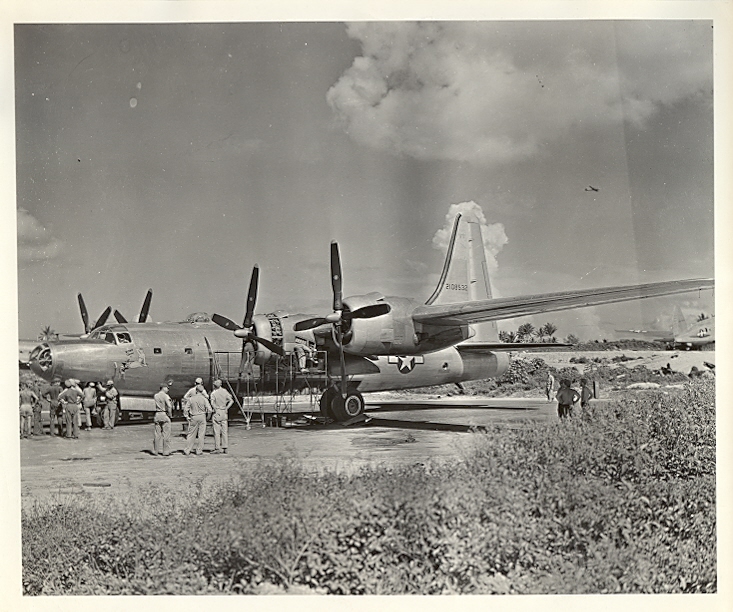Maiden Flight of the B-32 Dominator

Consolidated B-32 Dominator, the "Hobo Queen," during maintenance on Tinian, 1945. Gift of Elwyn Fink, 2010.216.364
Today marks the 70th anniversary of the maiden flight of the Consolidated B-32 Dominator. Never heard of the B-32 Dominator? Well, you’re not alone. Although the project to design this four-engine bomber began in 1940, the B-32 didn’t see combat until the last several weeks of the war. The Consolidated aircraft was the backup plan in case Boeing B-29 production ran into trouble, which it never did (it was standard protocol for the military to order parallel development programs in case one went wrong). The B-32, however, ran into myriad problems throughout its development, and the entire program was nearly scrapped on several occasions. Its first nearly real possible assignment was as a replacement for Mediterranean Theater B-24s beginning some time in 1944, but the Dominator wasn’t ready yet. That transition was never made.
But when 5th Air Force General Kenney couldn’t get his hands on the B-29s he requested, he settled instead for B-32s to serve as replacements for his B-24s. The 386th Bomb Squadron was reoutfitted with B-32s. The Dominator flew its very first combat mission over the Philippines on 29 May 1945, just a few months before the war ended. So the B-32’s claim to fame that none were ever lost in combat isn’t quite as impressive is it might sound. In mid-August a pair of Dominators doing photo reconnaissance were faced with Japanese Zeros. The “Hobo Queen II” was able to shoot down two of the Zeros, but Sgt. Anthony Marchione was killed, making him the last air casualty of American forces in World War II.
The B-32 program was shut down just days after the Japanese officially surrendered, and all Dominators were scrapped before 1950. Only about 100 were ever manufactured.
Consolidated B-32 Dominator Specs:
| Armament: | Ten .50-caliber machine guns plus a 20,000-pound bomb load |
| Engines: | Four Wright R-3350-23 Cyclone radial engines (2200 hp) |
| Maximum speed: | 357 miles per hour at 30,000 feet |
| Cruising speed: | 290 miles per hour |
| Range: | 3,000 miles with a 10,000-pound bomb load |
| Service Ceiling: | 30,700 feet |
| Span: | 135 feet |
| Crew: | Ten |
This post by Curator Meg Roussel
- Posted :
- Post Category :
- Tags :
- Follow responses to this entry through the RSS 2.0 feed. You can skip to the end and leave a response. Pinging is currently not allowed.




Leave a Reply